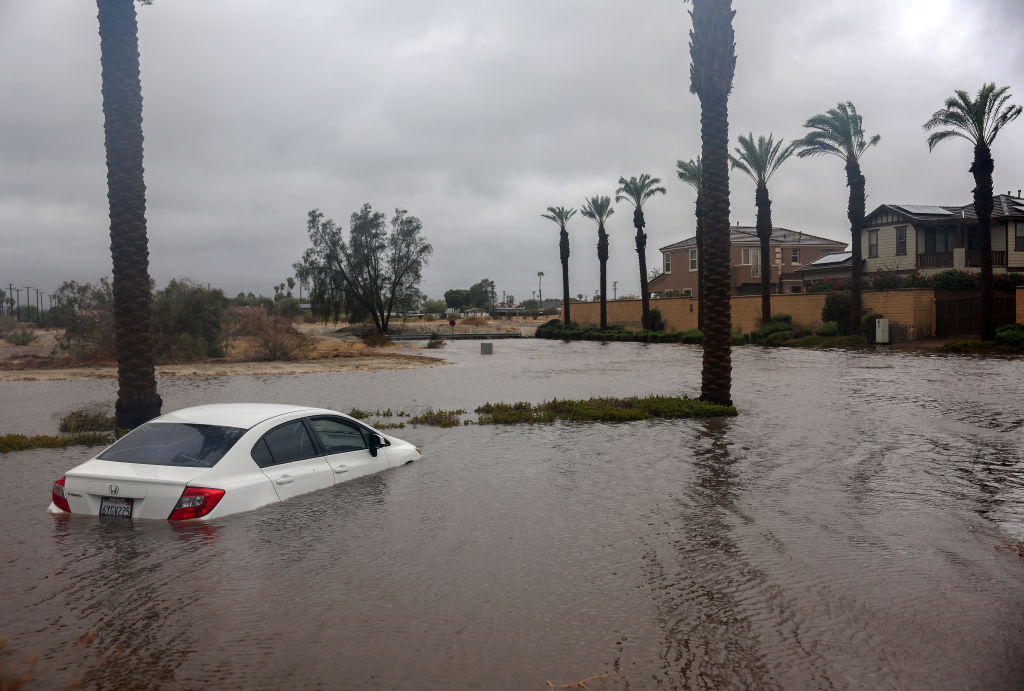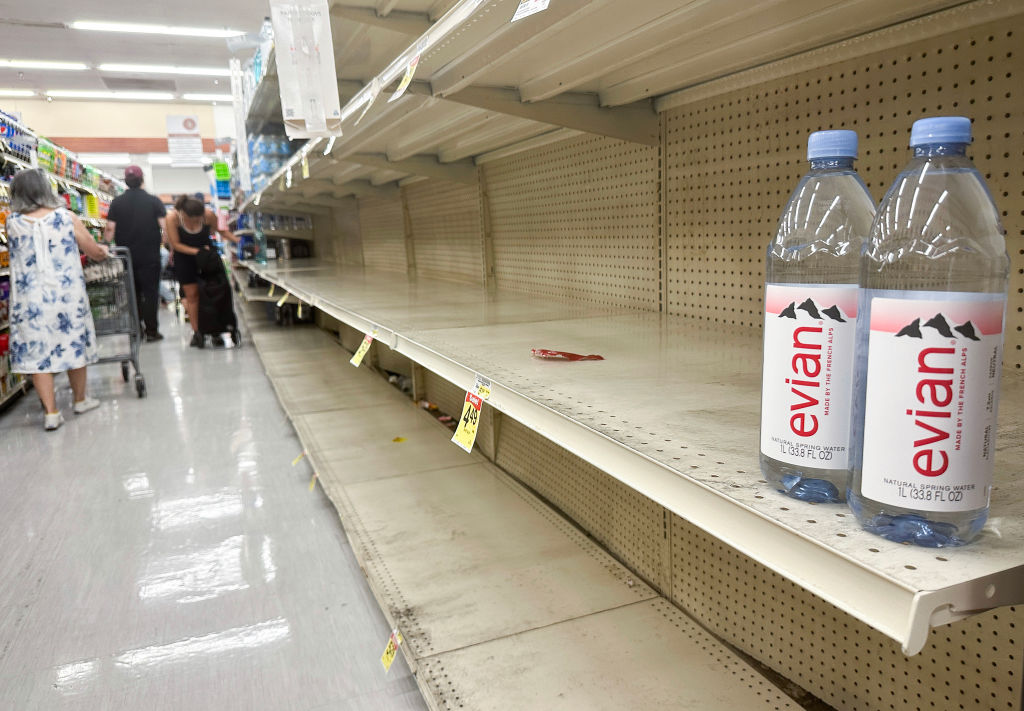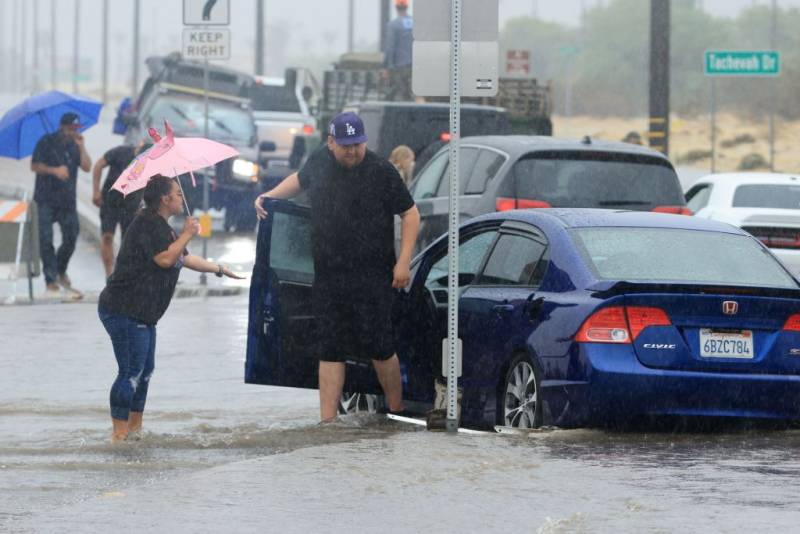Updated 8:30 p.m. Sunday
Tropical Storm Hilary inundated streets across Mexico’s arid Baja California Peninsula with deadly floodwaters Sunday before moving over Southern California, where it swamped roads and downed trees, as concerns mounted that flash floods could strike in places as far north as Idaho that rarely get such torrential rain.
Forecasters said Hilary was the first tropical storm to hit Southern California in 84 years, bringing flash floods, mudslides, high winds, power outages and the potential for isolated tornadoes.
Hilary made landfall along the Mexican coast in a sparsely populated area about 150 miles south of Ensenada, then moved through mudslide-prone Tijuana, threatening the improvised homes that cling to hillsides just south of the U.S. border.
At least 9 million people were under flash-flood watches and warnings as heavy rain fell across normally sunny Southern California ahead of the brunt of the storm. Desert areas were especially susceptible along with hillsides with wildfire burn scars, forecasters warned.

Mud and boulders spilled onto highways, water overwhelmed drainage systems and tree branches fell in neighborhoods from San Diego to Los Angeles. Dozens of cars were trapped in floodwaters in Palm Springs and surrounding desert communities across the Coachella Valley. The Los Angeles Unified School District, the nation’s second largest school system, said all campuses would be closed on Monday.
Hilary could wallop other Western states with once-in-a-century rains, with a good chance of it becoming the wettest known tropical cyclone to douse Nevada, Oregon and Idaho. Hilary was expected to remain a tropical storm into central Nevada early Monday before dissipating.
The Bay Area, meanwhile, will mostly be spared from the effects of Hilary.
“By Sunday night into Monday there is a greater chance that we’ll see more widespread shower activity across the Bay Area,” said Matt Mehle, lead meteorologist for NWS Bay Area. “When it’s all said and done we’re expecting generally less than a tenth of an inch for most of the Bay Area.”
California Gov. Gavin Newsom declared a state of emergency. The Federal Emergency Management Agency said it has officials inside California’s emergency preparedness office and teams on standby with food, water and other help.
Southern California got another surprise in the afternoon as an earthquake with a preliminary magnitude of 5.1 hit near Ojai, about 80 miles northwest of downtown Los Angeles, according to the U.S. Geological Survey. It was felt widely and was followed by smaller aftershocks. There were no immediate reports of major damage or injury, according to a dispatcher with the Ventura County Sheriff’s Office.
California State Parks closures
California State Parks announced temporary closures and camping cancellations due to potential impacts from Tropical Storm Hilary. All state beaches in Orange and San Diego counties will be closed on Sunday and Monday, August 20–21. State parks in the path of the storm, such as Cuyamaca State Park, Ocotillo Wells State Vehicular Recreation Area and Anza-Borrego Desert State Park, will also be closed due to flooding concerns. In addition, all incoming camping reservations for impacted areas are being canceled Sunday–Tuesday, August 20–22.

How will Tropical Storm Hilary affect Bay Area weather?
Hilary reached California on Sunday while still at tropical storm strength.
In the Bay Area, the National Weather Service forecast unsettled weather with cooler temperatures, cloud cover and chances of showers and isolated thunderstorms, with high chance of rain from late Sunday into early Tuesday. Read the weather forecast from the National Weather Service Bay Area office.
How can I be preparing for Tropical Storm Hilary if I live in an at-risk area?
If you or a loved one lives in Southern California, sign up to receive emergency weather alerts from the county.
County officials use these notifications to inform residents of weather alerts, street and road closures, and evacuation orders.
Find your at-risk California county below:
- San Diego County emergency alerts
- Imperial County emergency alerts
- Los Angeles County emergency alerts
- Orange County emergency alerts
- Riverside County emergency alerts
- Santa Barbara County emergency alerts
- San Bernardino County emergency alerts
- Ventura County emergency alerts
Why is Tropical Storm Hilary happening?
Hurricanes are much rarer on the country’s Pacific coast as ocean waters are much colder here than in the Atlantic and Gulf coasts.
However, meteorologists point out that a significant amount of warm water is helping keep the storm together as it moves up the Mexican coast. Ocean temperatures across the globe are on the rise, largely due to carbon emissions, and scientists are studying the deadly impact of marine heatwaves on wildlife.
However, Null says that hurricanes will not become casual occurrences along the West Coast anytime soon. “As the oceans warm, we will certainly see the possibility of some more frequent tropical storms getting farther and farther north. But that being said, it’s not going to be an annual occurrence,” he said.
“Maybe once a decade, maybe it will be twice a decade,” said Null.
This story includes reporting from The Associated Press and KQED’s Carlos Cabrera-Lomelí, Madi Bolaños and Christopher Alam.

